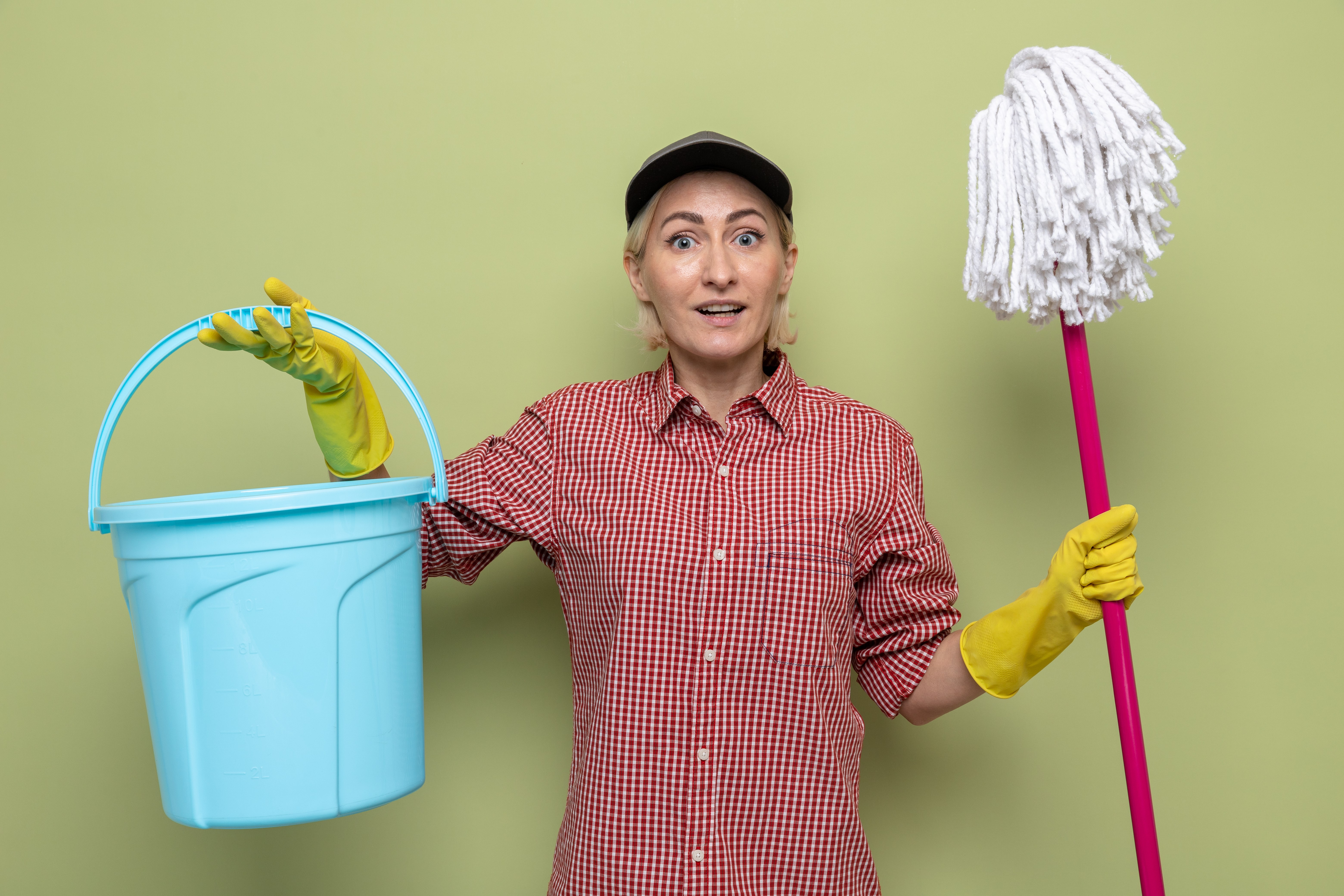6 Useful Hacks For Using Floor Mops

Mopping is the best way to clean hard floors, but it’s important to make sure you are removing germs, and not just spreading them. Whether you are cleaning your family home, or maintaining a commercial office, its important to understand the right ways to treat floor cleaning. Although mopping may seem like a simple task, it can actually be confusing. What type of mops should I be using? How do I know I’m fully cleaning the floor? Am I being efficient? We’ve put together six hacks for you to try out on your next cleaning day.
Clean Your Mop
Research has shown that your average kitchen floor has twice as much bacteria per square inch as your rubbish bin or toilet seat. As such, quickly mopping up a spill on the floor without rinsing and cleaning it thoroughly afterwards allows for a breeding ground for bacteria. If your mop head is machine washable, simply toss it into the washing machine at the hottest temperature. Alternatively, clean the mop by hand with adequate cleaning supplies – let it soak for 15 minutes before rinsing it out. Hereafter, ensure the mop is completely dried before storing to prevent growth of mildew and other germs.
If improperly or inadequately washed after each use, your mop will redeposit materials like trapped hair, fibers, soap, and other contaminants and germs from previous cleaning procedures back onto the surfaces you are attempting to clean. Here at Chemstart, we offer a wide range of cleaning products.
Use Two Buckets
Traditional floor mopping puts dirt back into the bucket, and then back onto the floor. Using a two-bucket system when mopping your floors will ensure that you aren’t pushing around contaminated water. Keep one bucket with plain water for rinsing, and the second for your detergent mixture. You can rinse and squeeze excess water out of your mop before soaking it again in the detergent to continue cleaning. With this said however, ensure that you regularly replace the contaminated water with fresh and clean water. Additionally, if you see your detergent mixture is also getting soiled, be sure to replace this for optimum cleaning solutions.
Care for your Supplies
Keeping your mops and other cleaning equipment impeccably clean is essential in maintaining a clean, germ-free environment. Even the slightest moisture, dirt and bacteria can make result in a sour smell, and an unhygienic environment. Therefore, to keep your mop in optimum condition, once you have thoroughly cleaned and rinsed your mop, keep it in a well-ventilated area to dry. The quicker a mop dries, the less likely it is to become malodorous. Once your mop has reached the end of its lifecycle – indicated by stained fibers or a permanent odor – dispose of it appropriately. When considering a new mop, consider a machine washable head.
Clean Frequently
High traffic areas like kitchens, hallways, bathrooms and entryways require weekly mopping. This ensures your spaces are consistently clean and hygienic preventing the spread of germs and bacteria. Infrequently used rooms such as guest rooms can go a little longer without a thorough clean. As long as they are regularly dusted and vacuumed to remove grit and dust. Having an all-in-one mop is a simple and easy way to quickly clean up spills, wipe down surfaces and remove muddy paw prints or stains in-between cleaning days.
Try Manage Separate Mops
In order to prevent the cross contamination of germs and bacteria, it is important to try utlise different mops – or mop heads – for the different parts of your home, office or public space. For example, you do not want to mop your kitchen floor with the same mop that cleans dirt and germs from bathroom floor. You can get creative with this – buy different coloured mops/mop-heads and label them specifically for the designated areas. This way you can ensure you are keeping your space optimally clean and hygienic.
Cotton String Mops are Full of Germs
Microfiber flat mops paired with a dual-compartment bucket is the most effect way to clean your floor. Or double bucket system as mentioned previously. Together, this prevents surface and mop head re-soiling. Compared to traditional cotton mops, dense microfiber blend promotes increased penetration for cleaner surfaces. Microfiber mops are easy to clean, and have been suggested to reduce bacteria by 96 percent.

